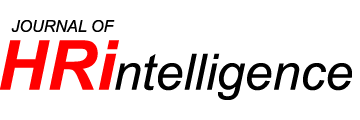A Causal Model of Organizational Performance in Energy Sector: Stock Exchange of Thailand
Supa Waisayarat, Surapool Payomyam, Suchittra Luangamornlert, Prachayanun Nilsook, Weerapong Kongsawas |
|
Abstract
The objective of this study was to determine the causal relationships model among leadership style, organizational culture, learning organization as they related to organizational performance of the Energy sector in Stock Exchange of Thailand. This research represents one of the few offorts at conceptualizing leadership style and organizational culture, and one of the first attempts to empirically test their influence on direct effect and indirect effect (mediating effect) on the learning organization and organizational performance relationship.
The proposed model was tested in the energy sector in Stock Exchange of Thailand (SET). Survey data were collected: 224 sets of completed questionaire were collected by means of random sampling of company managements selected from the list of companies in Stock Exchange of Thailand. A confirmatory factor analysis was conducted with all constructs; leadership style, organizational culture, learning organization and organizational performance. The factor analysis results showed that all constructs fitted well with the empirical data. And, a structural equation model utilizing the observed and latent variables produced a model that showed the direct and indirect effects of leadership style, organizational culture and learning organization on organizational performance. The results showed that four out or the six hypotheses were supported, and two hypotheses were rejected. Consistent with hypotheses, the results indicated that, learning organization had strong direct effect on organizational prformance (0.57, p<0.001), leadership style and organizational culture both had direct effect on learning organization (0.56 and 0.63, p<0.001, respectively). Moreover, leadership style and organizational culture both had indirect effect on organizational performance (0.13 and 0.36, respectively).
However leadership style and organizational culture were not found to provide direct effect on organizational performance. Hence, in the differences contexts, the scenarios of management level who responded to the questionnaires have different perceptions that form the relationship of leadership style to organizational performance and organizational culture to organizational performance. The findings of research make some contributions to both academic and practical levels. In the academic level, the findings will help extend the bodyof knowledge of organizational performance, learning organization, leadership style and organizational culture.
This research provided several areas for future research directions. The utilization of the relationship among organizational performance, learning organization, leadership style and organizational culture model could identify and refine additional mediator constructs to these relationships and improve amount of variance explained in organizational performance. Moreover, future research can be designed to investigate other multi-sample differences or to test the relationship between learning organization and organizational performance in other aspects of demographic variables. |

